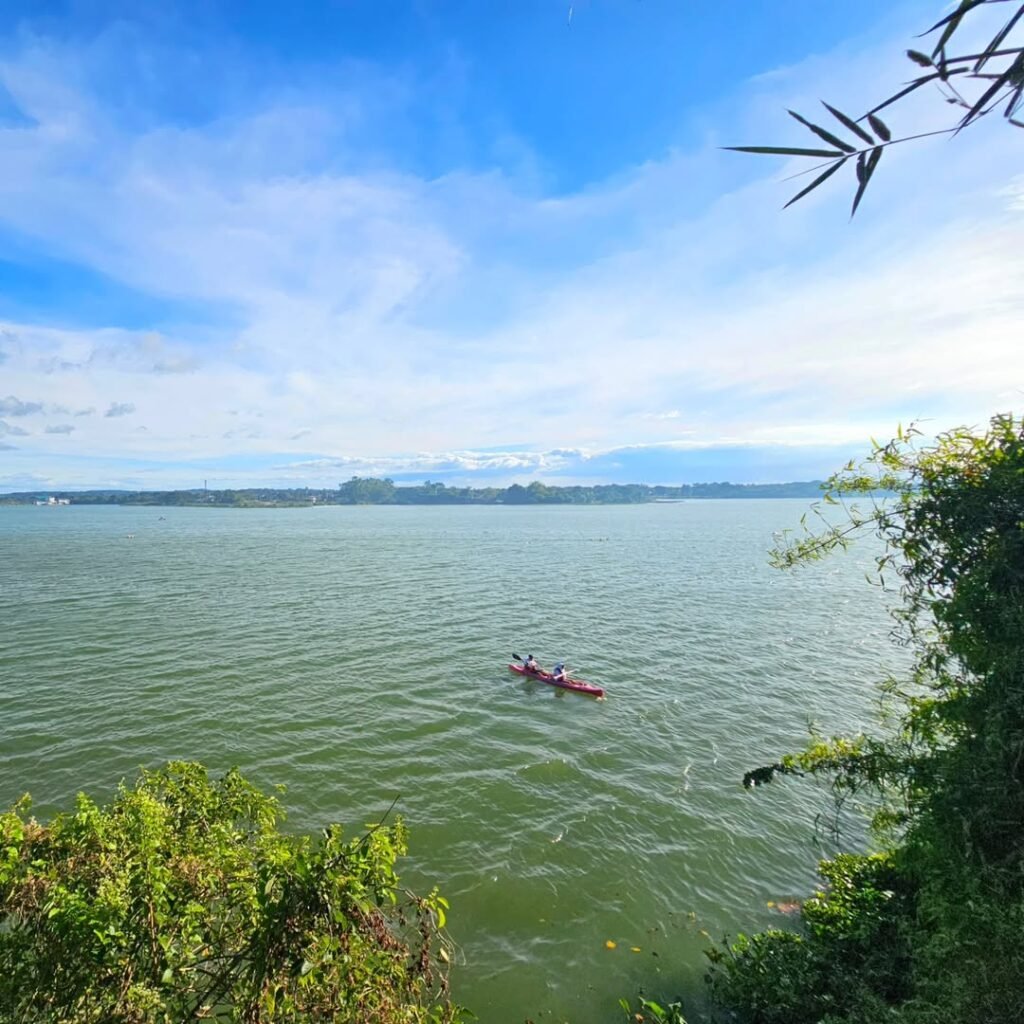Introduction to Tourist spot in Nueva Ecija
When people mention Nueva Ecija, the image that often comes to mind is that of the “Rice Granary of the Philippines”—a vast, sun-drenched landscape of endless golden fields. For years, I held that same perception. However, after venturing deep into its towns and mountains, I discovered a province that shatters this one-dimensional stereotype. The agricultural identity is its backbone, but its soul is a thrilling tapestry of adventure, serenity, and history waiting to be explored.
This region is a premier Tourist Destination in Nueva Ecija, offering a surprisingly diverse blend of attractions that can rival more famous locales. I’ve found that the real magic lies in its contrasts. One day you can be navigating the dramatic emerald river of a national park, and the next, you could be relaxing in a modern highland resort overlooking a massive, tranquil lake.
This guide is built from my experiences and is designed to take you on a journey through it all. We will uncover the essential Must-visit Places in Nueva Ecija, from the adrenaline-pumping activities in Minalungao and the serene escape of Pantabangan to the rich historical trails of Gapan and Cabanatuan. Prepare to discover every remarkable Nueva Ecija tourist spot that makes this province the true heartland of the Philippines.
Table of Contents
A Critical Clarification: Distinguishing Nueva Ecija from Nueva Vizcaya
Before we dive into the incredible attractions awaiting you, I need to share a crucial piece of travel wisdom that I’ve seen cause real confusion for many adventurers. It’s a simple geography mix-up that can easily derail an itinerary. Due to their similar names and proximity, online searches often mistakenly merge the tourist spots of Nueva Ecija with its northern neighbor, Nueva Vizcaya. To ensure your journey is perfectly planned, let’s clear this up from the start.
I want to be absolutely explicit so you can travel with confidence: the following popular destinations are located exclusively in the province of NUEVA VIZCAYA, not Nueva Ecija:
Dalton Pass (or Balete Pass)
Mount Ugo
Mount Pulag (via the Ambaguio Trail)
Imugan Falls
St. Dominic Cathedral (Bayombong)
While these are all fantastic places to visit, you won’t find them here. This guide is your authoritative resource, focusing solely on the verified attractions located within the administrative boundaries of Nueva Ecija. Now, let’s explore the genuine gems the province has to offer.

Nueva Ecija Tourist Spot List: Attractions at a Glance
To help you navigate all the incredible options Nueva Ecija has to offer, I’ve expanded this quick-reference guide into a comprehensive list. From my experience, seeing everything in one place is the best way to start mapping out a truly personalized adventure. Whether you’re an adrenaline junkie hunting for your next thrill, a history buff eager to walk through the past, or a family seeking a peaceful weekend retreat, this complete table will help you instantly find what you’re looking for. Think of this Nueva Ecija tourist spot list as your personal cheat sheet for building the perfect itinerary.
Complete List of 28 Tourist Spot in Nueva Ecija
| Attraction Name | Municipality | Category | Best For |
| Minalungao National Park | General Tinio | Natural Park | Adventure, Families, Nature Lovers |
| Pantabangan Dam & Lake | Pantabangan | Man-Made Attraction | Relaxation, Water Sports, Scenery |
| Mount 387 (Batong Amat) | Carranglan | Hiking Trail | Hikers, Adventure Seekers |
| Aloha Falls | Carranglan | Natural Attraction | Hikers, Nature Lovers |
| Lake Farm Dela Marre | Pantabangan | Modern Resort | Relaxation, Families, Couples |
| Camp Paraiso | Bongabon | Nature Resort | Relaxation, Nature Lovers |
| Highland Bali Villas & Spa | Pantabangan | Luxury Resort | Couples, Luxury Stays, Relaxation |
| George Point | Pantabangan | Family Resort/Park | Families, Relaxation, Scenery |
| Forest Garden | Pantabangan | Natural Park | Relaxation, Picnics, Strolling |
| Carron Dream Park | San Isidro | Amusement Park | Families, Leisure |
| Lumang Gapan (Little Vigan) | Gapan | Heritage Site | History Buffs, Photographers |
| National Shrine of La Virgen Divina Pastora | Gapan | Pilgrimage Site/Church | Spiritual Travelers, History Buffs |
| Gapan City Plaza | Gapan | Urban Park | Leisure, Families |
| Mount Olivete | Bongabon | Pilgrimage Site | Cultural Travelers, Spiritual Seekers |
| Shrine of the Holy Face of Jesus | Nampicuan | Pilgrimage Site/Church | Spiritual Travelers |
| Taong Putik Festival | Aliaga | Cultural Festival | Cultural Travelers, Photographers |
| Pangatian War Memorial Shrine | Cabanatuan | Historical Site | History Buffs, Educational Tours |
| General Antonio Luna Death Place Marker | Cabanatuan | Historical Marker | History Buffs |
| Freedom Park | Cabanatuan | Urban Park | Leisure, Relaxation |
| PhilRice Institute | Muñoz | Educational Site | Educational Tours, Agri-tourism |
| Gabaldon Falls | Gabaldon | Natural Attraction | Nature Lovers, Hikers |
| General Luna Falls | Rizal | Natural Attraction | Adventure Seekers, Nature Lovers |
| Dupinga River | Gabaldon | Natural Attraction | Relaxation, Picnics, Families |
| Calabasa River | Gabaldon | Natural Attraction | Relaxation, Picnics, Families |
| Labi River | Bongabon | Natural Attraction | Picnics, Relaxation |
| Burburayok Spring | Rizal | Natural Spring | Relaxation, Wellness |
| Pajanutic Falls | Carranglan | Natural Attraction | Intrepid Hikers, Adventure |
| Binbin Falls | Carranglan | Natural Attraction | Intrepid Hikers, Adventure |
| Palasapas Falls | San Jose City | Natural Attraction | Intrepid Hikers, Adventure |
| “7 wonder falls” Trek | Bongabon | Hiking Trail/Trek | Expert Hikers, Adventure |

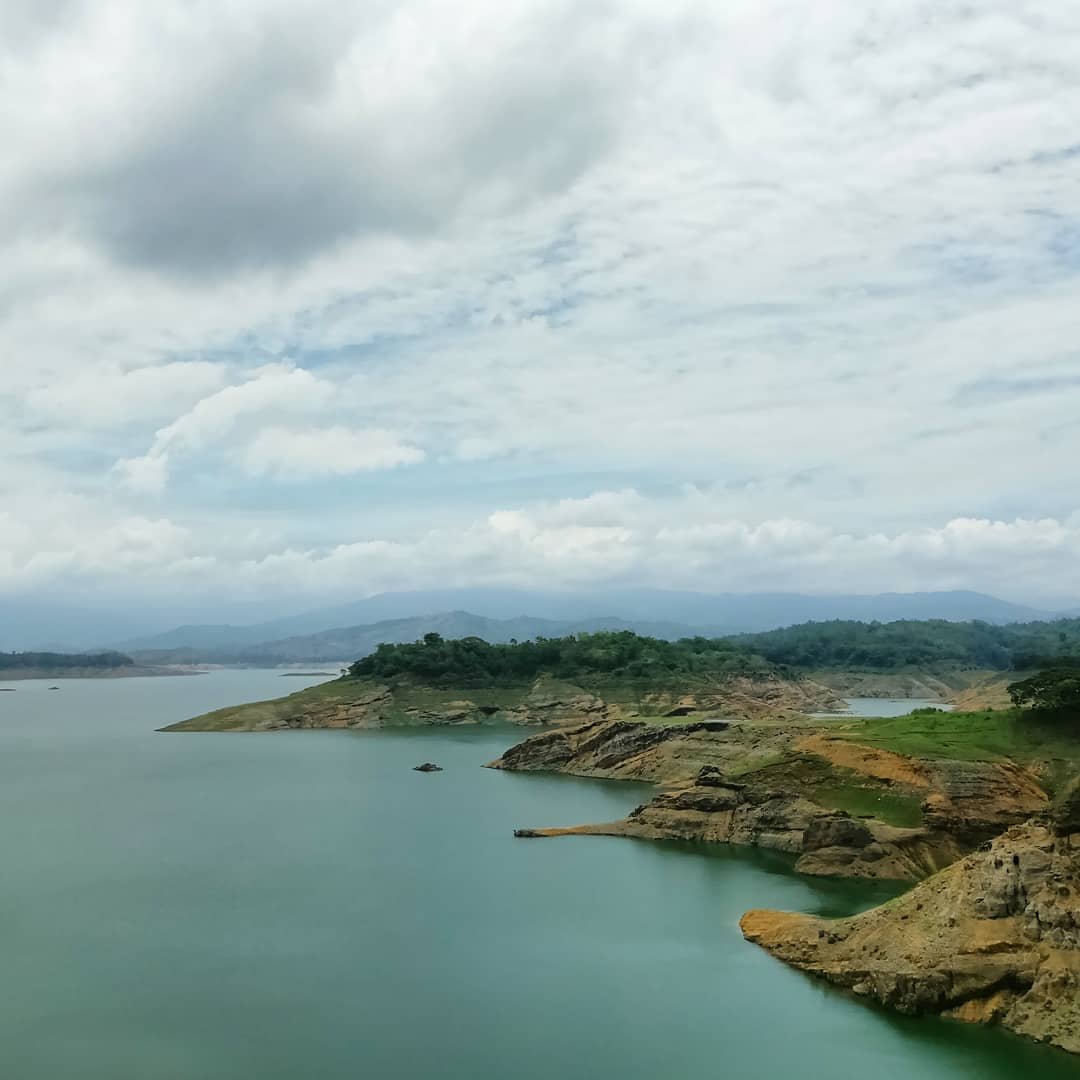
Section I: Icons of the Province – The Essential Nueva Ecija Tourist Attractions
When you start planning a trip to Nueva Ecija, there are three iconic destinations that consistently top every list. From my experience, these places are the absolute best starting points as they perfectly capture the province’s diverse appeal—from breathtaking natural parks and monumental man-made wonders to rewarding mountain treks. These are the essential sites that have rightfully put Nueva Ecija on the map for adventurers and leisure travelers alike.
Minalungao National Park (General Tinio): The Crown Jewel in Transition
If there’s one place that has single-handedly catapulted Nueva Ecija into social media stardom, it’s Minalungao National Park. I remember when it was a well-kept local secret, but today it has transformed into a bustling eco-tourism destination. It’s crucial to set your expectations: this is no longer a secluded wilderness but a well-developed recreational park.
The park’s heart remains the spectacular Peñaranda River, which carves a dramatic path through the Sierra Madre foothills. Its signature feature is the stunningly clear, emerald-green water flanked by majestic limestone walls that soar up to 16 meters high, creating a breathtaking natural playground. Read our Complete Travel Guide for Minalungao National Park.
Activities in Minalungao
Minalungao offers a full day of both adventure and relaxation. The main activities I recommend are:
Bamboo Rafting: The quintessential Minalungao experience. Cruising down the serene river on a floating bamboo cottage offers the best, most relaxing views of the canyon.
Swimming and Cliff Diving: The cool, pristine water is irresistible. For a dose of adrenaline, there are several rock formations that serve as natural platforms for a thrilling plunge.
Trekking and Spelunking: A 1,000-step staircase leads to a grotto and a cross at a summit, providing a fantastic panoramic view of the entire park. You can also hire a guide to explore the park’s cave system.
Ziplining: For a bird’s-eye view, a zipline stretches across the river, offering a thrilling perspective of the landscape below.
Hanging Bridge: This iconic bridge is one of the best spots for photography, allowing you to appreciate the sheer scale of the canyon.
Practical Guide
How to get to Nueva Ecija’s Minalungao from Manila:
By Public Transport: From Cubao or Pasay, take a bus bound for Gapan (around ₱200). In Gapan, hire a tricycle for a direct trip to the park. I strongly advise arranging a round-trip service (₱500-₱800), as getting a ride back from the park is difficult.
By Private Vehicle: Take the NLEX, exit at Santa Rita, and follow the signs toward Gapan. From there, follow the signs to General Tinio and Minalungao. Expect some rough road patches closer to the park.
Visitor Tips: The best time to visit is during the dry season (November to April) when the water is at its most vibrant green. To avoid massive crowds, a weekday visit is highly recommended.
Table 2: Estimated Costs
| Activity / Fee | Reported Cost Range |
| Entrance Fee | ₱40 – ₱100 per person |
| Parking Fee | ₱50 per vehicle |
| Bamboo Raft / Cottage | ₱100 – ₱1,500 (size dependent) |
| Zipline | ₱100 – ₱200 (one-way/two-way) |
Pantabangan Dam and Lake: The Serene Giant
In stark contrast to Minalungao’s bustling energy is the profound tranquility of Pantabangan Dam and Lake. This isn’t just a piece of infrastructure; it’s a monumental engineering feat that has created a stunning highland paradise. Built in 1974, this massive earth-fill dam created one of Southeast Asia’s largest reservoirs. While its purpose is practical—irrigation and power—its effect has been to create a serene landscape of vast, clean water reflecting the sky and the surrounding Sierra Madre mountains. The atmosphere here is one of peaceful grandeur, making it the perfect hub for relaxation.
Activities at Pantabangan
Sport Fishing: The lake is a premier destination for anglers, known for its healthy population of bass and tilapia.
Boating and Water Sports: Exploring the vast lake via a boat tour, kayak, or jet ski is a fantastic way to spend an afternoon.
Sightseeing and Picnicking: Numerous viewpoints offer breathtaking panoramic views ideal for photography.
Hiking and Camping: The surrounding hills provide trails and campsites for deeper immersion in nature.
Practical Guide
Transportation routes from Manila: From Manila, you can take a bus to Cabanatuan City Central Terminal (approx. ₱300), then a jeepney or van to Pantabangan town proper (approx. ₱150). By private car, the drive via NLEX and SCTEX takes 3-4 hours.
Best Time to Visit: The dry season from November to May offers the most pleasant weather for all outdoor and water activities.
Mount 387 (Batong Amat) & Aloha Falls (Carranglan Nueva Ecija): The Chocolate Hills of the North
For hiking enthusiasts, from beginners to seasoned trekkers, Mount 387 is one of Central Luzon’s most rewarding climbs. Located in Carranglan, its popular name comes from its 387-hectare protected area, while its local name, Batong Amat, means “Ghost Rock.” The mountain is most famous for its summit, which offers a stunning vista of rolling, conical hills that strongly resemble Bohol’s Chocolate Hills, especially when the grass turns brown in the dry season.
A truly meaningful part of the experience, which I found very special, is the requirement for each hiker to plant a tree seedling—a community-led reforestation effort. Read our complete travel guide about Mt. 387
The Hiking Experience
The Trail to the Summit: The hike to the top is relatively easy (difficulty 2/9) and takes about 2-3 hours, passing through grasslands and forests.
The Traverse to Aloha Falls: For a greater challenge, you can take the traverse to Aloha Falls (difficulty 4/9). This involves a steep and demanding descent that is tough on the knees, but the reward is a refreshing swim in the cool cascades of the falls.
Practical Guide
Mandatory Coordination: Walk-ins are strictly not allowed. You must contact the local coordinator, Roy Manuzon (+63 917 571 2152), to register and secure a guide.
How to Go: By public transport, take a Tuguegarao-bound bus and get off at Km. 175 in Carranglan. By private vehicle, navigation apps can lead you to the “Mount 387 Hiking Station.”
Fees: Registration is ₱70 for a day hike. The guide fee is ₱400 for a group of up to 7 hikers.
What to Bring: Essentials include 2-3 liters of water, trail snacks, a valid ID, and hiking gloves, which are incredibly helpful for the steep descent on the traverse.

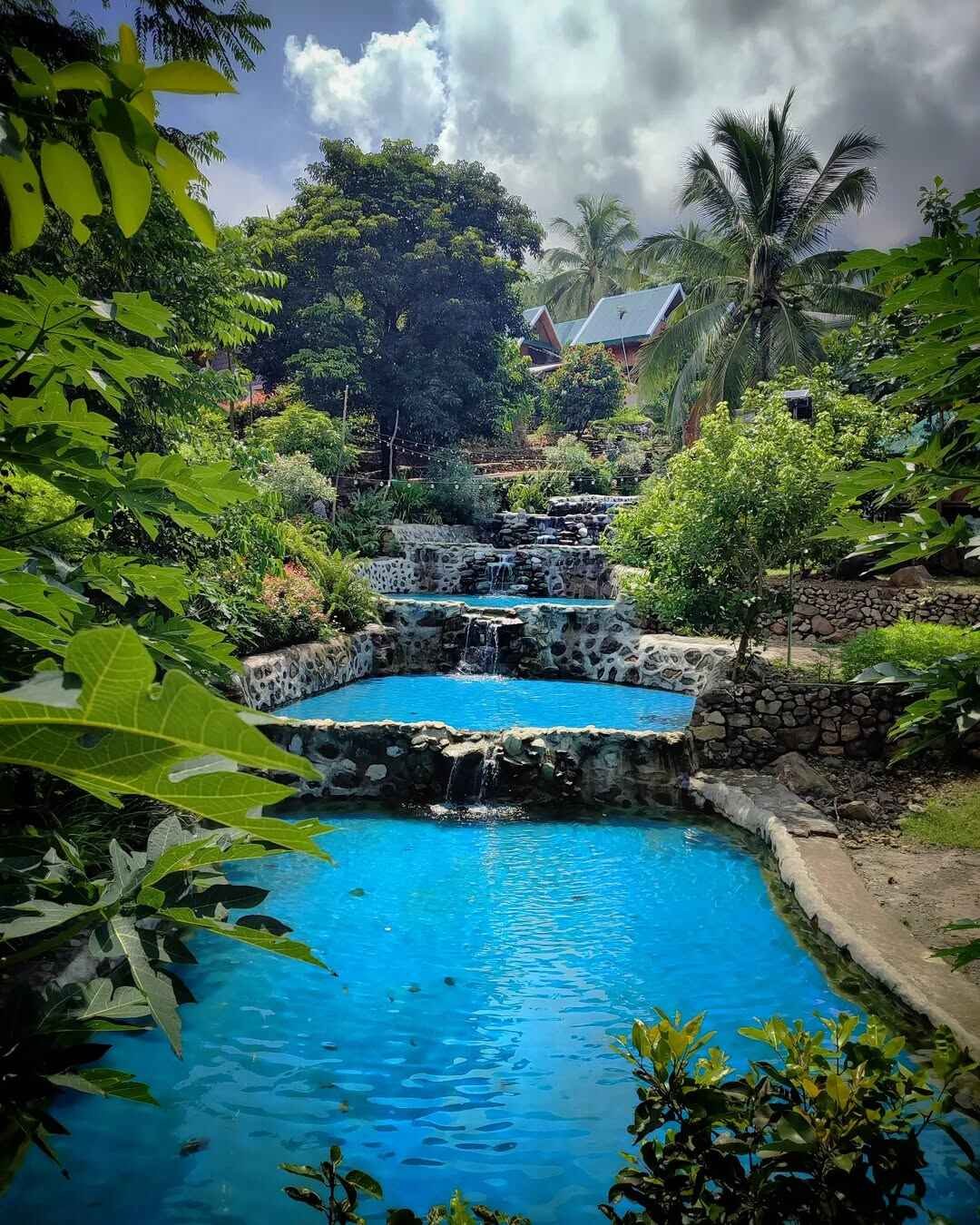
Section II: The New Wave – Modern Resorts and Emerging Attractions
Beyond its timeless natural and historical icons, Nueva Ecija is currently experiencing a tourism renaissance. In my recent travels, I’ve been amazed to witness the rapid development happening, particularly in the highlands surrounding Pantabangan and Bongabon.
This area is transforming into a vibrant corridor for modern, “Instagrammable” getaways that cater perfectly to city dwellers seeking a scenic and accessible escape. This new wave is defined by destination resorts that blend sophisticated comfort with the province’s stunning natural beauty, offering a complete vacation experience just a few hours’ drive from Manila.
The Rise of Destination Resorts: A Taste of Bali in the Highlands
The cool mountain air and breathtaking lakeside views of the Pantabangan-Bongabon area have become the canvas for a new breed of resorts. Many of these places are so well-designed and integrated with nature that they’ve earned the collective nickname “The Bali of the North.” From my visits, it’s clear they aim to provide a transportive experience, making you feel worlds away from the everyday grind.
Here are some of the standout properties that are defining this exciting trend:
Lake Farm Dela Marre (Pantabangan): This spot is a perfect example of the province’s booming agri-tourism. What started as a private farm has blossomed into a must-visit destination. I found its most enchanting feature to be the field of “5000 Roses”—an installation of LED flowers that creates a magical landscape at dusk. Combined with an infinity pool, jacuzzi, ATV rentals, and options for casita stays or glamping, it offers a picturesque and activity-filled retreat.
Camp Paraiso (Bongabon): Often called the “Bali of Bongabon,” this resort’s main draw is its unique, multi-layered infinity pools. What I love is that the pools are filled with refreshingly cool, natural spring water flowing directly from the mountains. Nestled in the lush greenery of Barangay Labi, it’s a true sanctuary of calm, perfect for those looking to unplug and immerse themselves in nature.
Highland Bali Villas Resort and Spa (Pantabangan): For those seeking a more luxurious experience, this resort fully embraces its “Bali of the North” branding. It targets the high-end market with opulent, Balinese-inspired villas and suites, a private waterpark, and premium spa services. It’s an exclusive sanctuary that successfully merges lavish design with the serene backdrop of Pantabangan Lake.
George Point (Pantabangan): If you’re traveling with family or prefer a more understated escape, I highly recommend George Point. It has a wonderfully calm and charming ambiance with vast green lawns perfect for picnics and enjoying the sweeping sunset views over the lake. Its playful Dino Park is a huge hit with children, and the availability of cabins and campsites makes it an ideal spot for a longer, more peaceful family holiday.
Leisure and Recreation for All Ages
Complementing the rise of these staycation hubs are attractions designed for pure, unadulterated fun, especially for families and groups.
Carron Dream Park (San Isidro): This amusement park is a vibrant hub of laughter and excitement and a major draw for families across Central Luzon. It saves locals a long trip to Manila for a theme park experience. A key fact that boosts my confidence in the park is that its parent company actually manufactures amusement rides for many of the country’s most famous parks, assuring a certain standard of quality and safety. You’ll find everything from roller coasters and bumper cars to a spinning disc ride. It’s open on weekends and offers reasonably priced all-ride passes.
Forest Garden (Pantabangan): For a quiet afternoon, the Forest Garden is a true hidden gem. It’s a lush, green oasis with winding paths that invite leisurely strolls and birdwatching. Unlike the more bustling parks, its relatively low foot traffic ensures a more intimate and peaceful experience with nature. My advice is to visit in the early morning or late afternoon when the temperature is cooler and the soft light is perfect for photography.
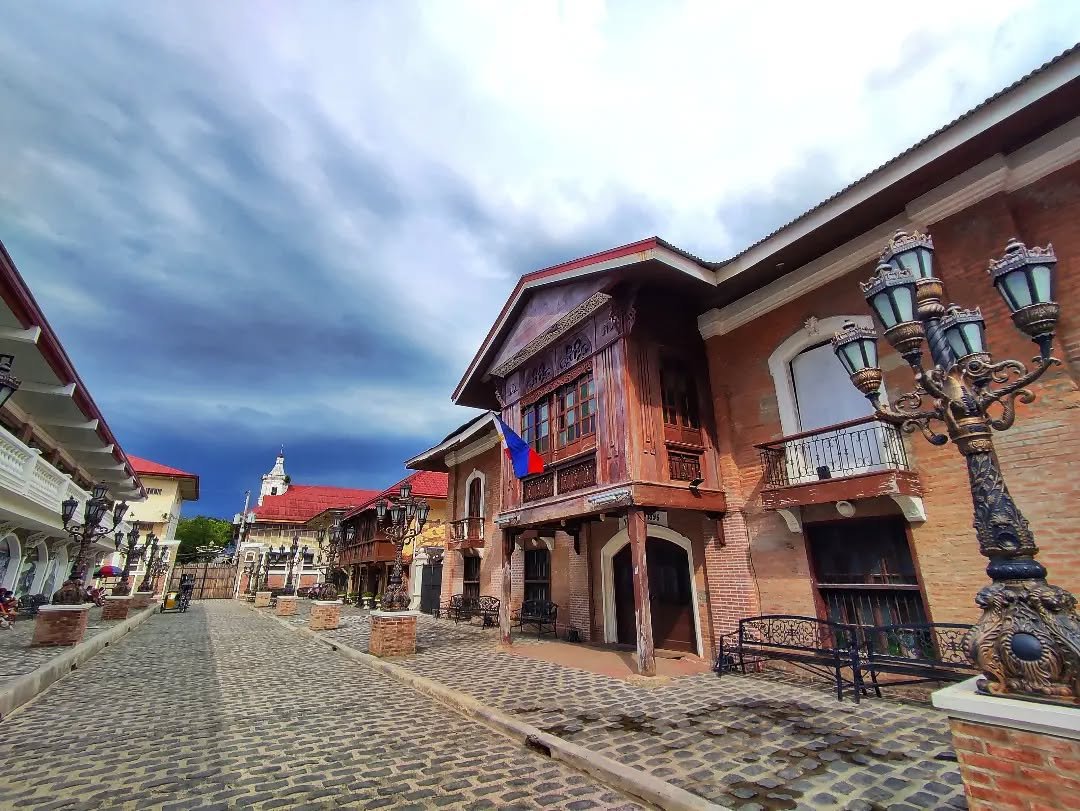
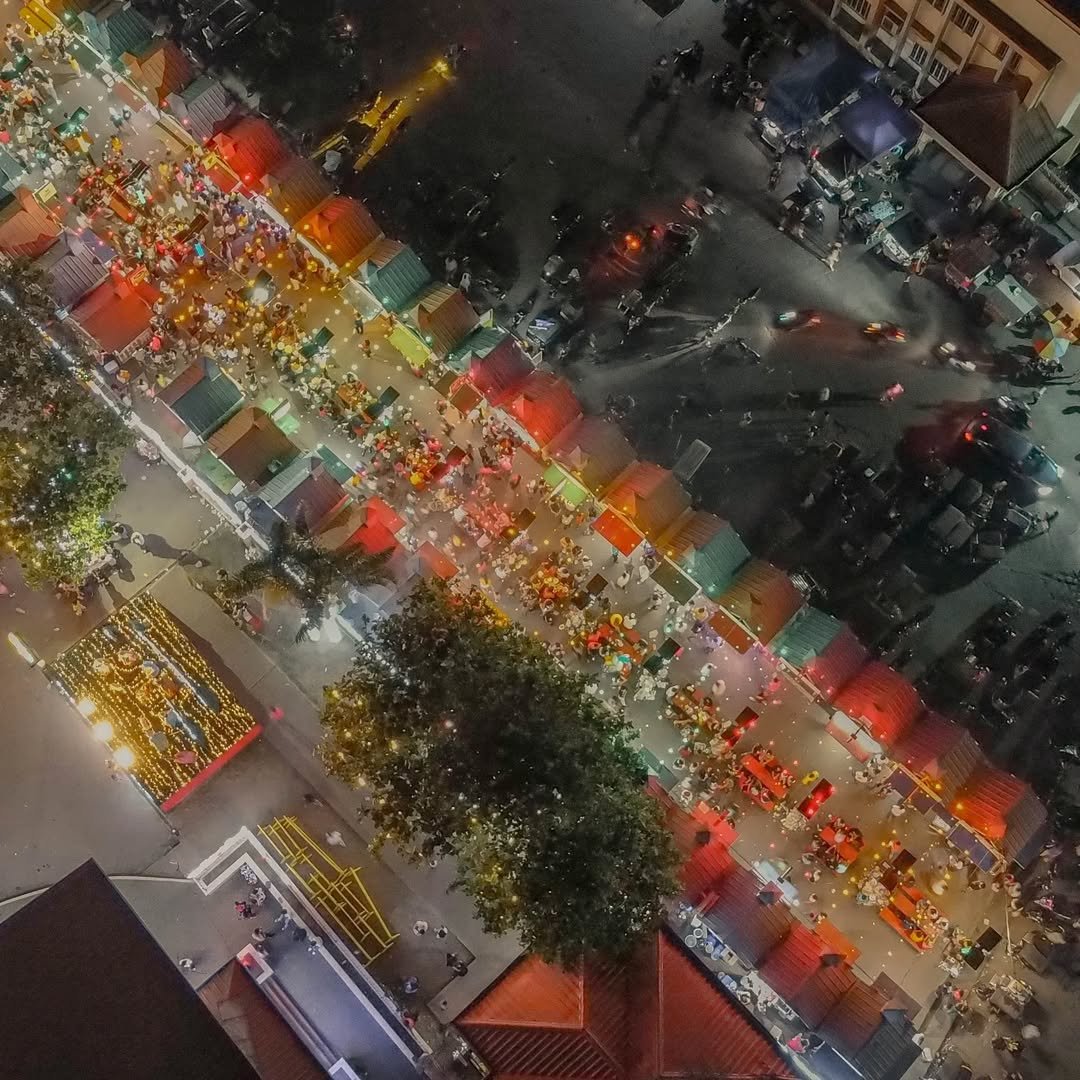
Section III: A Journey Through Time – Heritage, History, and Faith
While Nueva Ecija’s natural landscapes are breathtaking, I find that its soul truly resides in its rich and layered past. To truly understand the province, you must take a journey through its stories—tales of colonial grandeur, deep spiritual devotion, and profound wartime sacrifice. This section is for the traveler who, like me, believes that a place’s history is one of its most compelling attractions. From ancient churches and heritage towns to unique pilgrimage sites and solemn memorials, these destinations offer a powerful connection to the heart of Novo Ecijano identity.
The Heritage of Gapan City: History in Stone and Spirit
Gapan, one of the oldest towns in the province, serves as the primary gateway to Nueva Ecija’s Spanish colonial past. When I walk its streets, there’s a palpable sense of history that feels both authentic and accessible. It’s a city where the past and present are in constant, vibrant conversation.
Lumang Gapan (“Little Vigan”): This charming historical district is a personal favorite. It offers a wonderful glimpse into the past without the long journey to Ilocos Sur. Strolling along its cobblestone streets, admiring the well-preserved ancestral houses with their timeless architecture and vintage lamp posts, truly feels like stepping back in time. As a practical tip for modern travelers, a food park has been conveniently established nearby, making it easy to grab a meal after your historical walk.
National Shrine of La Virgen Divina Pastora: The spiritual centerpiece of Gapan is this magnificent church, notable for its distinct Byzantine architectural style. As a declared national shrine, it is a major pilgrimage destination, drawing faithful devotees from all over the country. The reverence for the image of the Divine Shepherdess is profound, with countless miracles and answered prayers attributed to her intercession.
Gapan City Plaza: This is the city’s vibrant social heart, especially in the evenings. It’s the perfect spot for a leisurely walk, enjoying the colorful lights and sampling local street food. A Ferris wheel even offers elevated views of the city, providing a unique perspective of the nearby heritage sites.
Pilgrimage Trails and Novo Ecijano Faith
The province’s spirituality is deep and incredibly diverse, showcasing a fascinating blend of mainstream devotion and unique folk traditions. Exploring these sites has always given me a deeper appreciation for the local culture.
Mount Olivete (Bongabon): This place is absolutely fascinating. It’s a major center for folk Catholicism and spiritualism, where a hundred-step stone staircase leads to a hilltop church. The area is most famous for a spring that believers call the “River Jordan,” whose waters are considered to have miraculous healing properties. Visiting during Holy Week is an unforgettable cultural immersion, with unique rituals like a paghuhugas (washing) ceremony and a sakripisyo (sacrifice) that attract thousands of pilgrims.
Shrine of the Holy Face of Jesus (Nampicuan): This church houses a rare treasure: a replica of the Sudarium of Manoppello, a cloth believed to bear the miraculous image of Jesus’ face. The story of how this relic found its way to this small town is remarkable, and the devotion it inspires has made Nampicuan an important stop on the country’s pilgrimage map.
Taong Putik Festival (Aliaga): Held every June 24th, this is one of the most visually distinct and culturally rich festivals I have ever witnessed in the Philippines. To honor St. John the Baptist, devotees cover their entire bodies in mud and adorn themselves with dried leaves and vines. The practice commemorates a local legend from WWII, where villagers, about to be executed by Japanese soldiers, were saved by a sudden downpour. They celebrated by covering themselves in mud in an act of thanksgiving.
Echoes of War: Remembering the Past
Nueva Ecija played a pivotal and harrowing role during World War II, and several sites stand as solemn reminders of this period. Visiting them is a sobering and essential experience for understanding the province’s place in national history.
Pangatian War Memorial Shrine (Cabanatuan): This site holds immense historical weight. Originally a military camp, it was converted by the Japanese into a brutal concentration camp for Allied prisoners of war. It is most famous as the location of the “Great Raid” in January 1945, a daring rescue mission by U.S. Army Rangers and Filipino guerrillas that liberated over 500 Allied POWs. The shrine now stands as a quiet, powerful tribute to the memory of those who were imprisoned and died there.
General Antonio Luna Death Place Marker (Cabanatuan): Located in Cabanatuan City Plaza, a simple marker indicates the historic site where the fiery Filipino general, Antonio Luna, was assassinated in 1899 during the Philippine-American War.
Freedom Park (Cabanatuan): This well-maintained urban park offers a peaceful space for relaxation but also serves as a place of remembrance, featuring historical monuments that blend seamlessly with its natural surroundings.
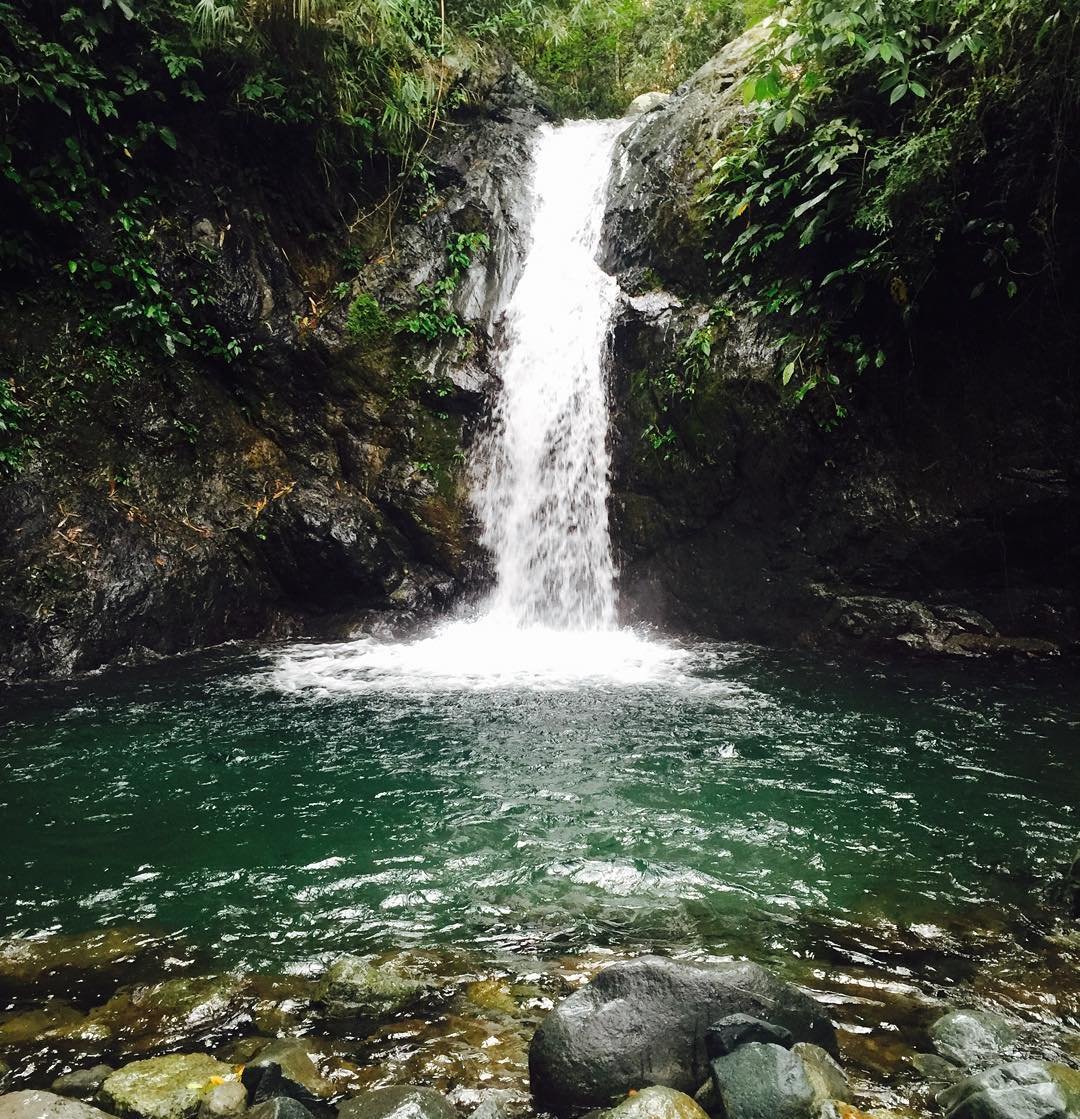
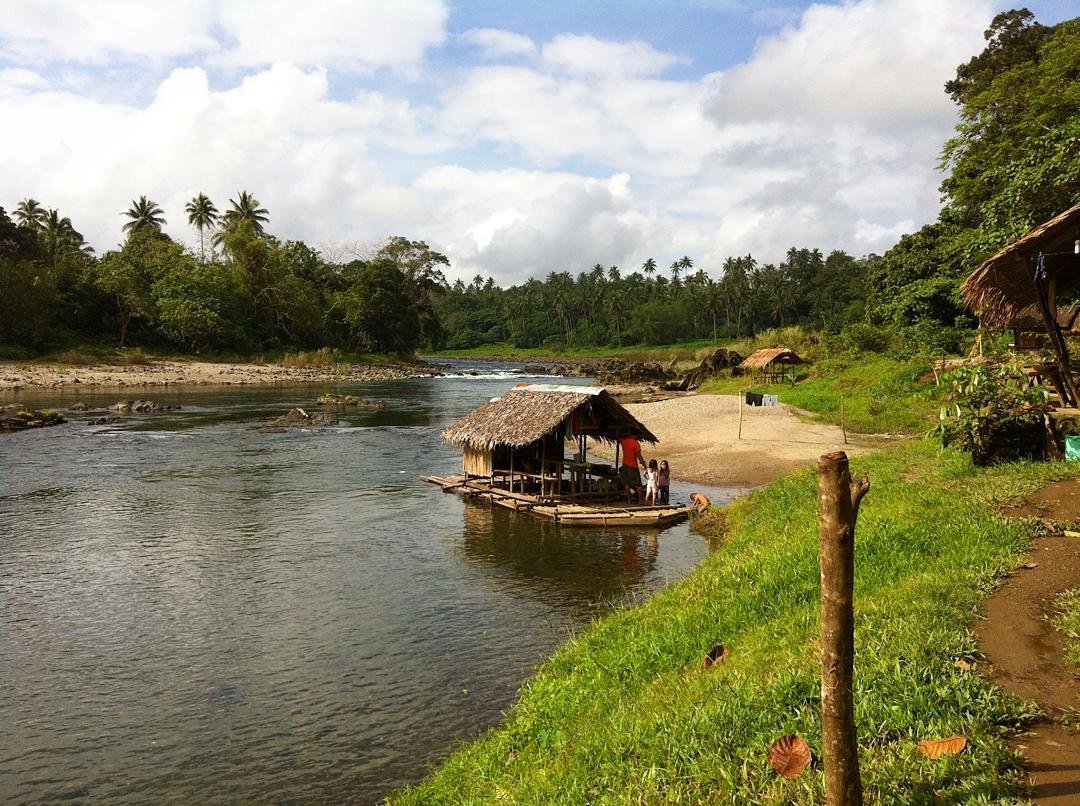
Section IV: A Hidden Gem in Nueva Ecija – Off-the-Beaten-Path Spots
For those of you who, like me, find the greatest travel joy in discovery, this section is for you. While the iconic destinations are must-visits, the true spirit of adventure often lies just beyond the well-trodden path. I’m talking about the places that remind me of what Minalungao was like years ago—raw, undeveloped, and wonderfully authentic.
Finding a true hidden gem in Nueva Ecija requires a bit more effort; information can be scarce, and you might need a local guide. But the reward is an unfiltered experience of the province’s natural beauty, far from the weekend crowds.
Chasing Waterfalls in the Sierra Madre
While Nueva Ecija isn’t primarily known for its waterfalls, the province’s mountainous eastern border, where it meets the mighty Sierra Madre range, conceals some truly beautiful cascades for those willing to look.
Gabaldon Falls (Gabaldon): Tucked away in the foothills of Mount Mingan, this 10-foot waterfall is a perfect example of a rewarding trek. Reaching it involves a 20 to 40-minute hike through a mix of gravel paths, paved stairs, and some fun, rocky stream crossings. Your prize is a serene natural pool filled with rippling, ice-cold water that is absolutely perfect for a refreshing dip after the hike. There’s generally no entrance fee, but a small local ecotourism fee may be collected.
General Luna Falls (Rizal): For a more dramatic spectacle, this waterfall is an imposing sight. It towers over 100 feet high, cascading widely across a rocky mountain face. It offers a powerful display of nature for those willing to venture a bit further afield into the eastern part of Rizal.
Lesser-Known Cascades: For the truly intrepid explorer, whispers of other waterfalls exist in local circles. These include Pajanutic Falls and Binbin Falls in Carranglan, and Palasapas Falls in San Jose City. The municipality of Bongabon is also said to host a series of “7 wonder falls,” but this is a serious multi-day trek that I strongly advise you only attempt after coordinating directly with the local tourism office.
Pristine Rivers and Natural Springs
Long before the resorts arrived, locals have been escaping the heat by flocking to the province’s cool, clear rivers flowing from the mountains. These are fantastic spots for an authentic family picnic and a relaxing swim.
Dupinga River (Gabaldon): This is a beloved local favorite, and it’s easy to see why. The river is largely undeveloped, offering pristine, cool waters in a lush, green setting. It’s an excellent spot for family picnics, with rustic cottages for rent and shallow, child-friendly pools that make it a safe and enjoyable destination.
Calabasa River (Gabaldon): Another serene river escape in the same municipality, Calabasa River is a perfect alternative to more crowded spots. Featuring clear, shallow waters flowing directly from the Sierra Madre, it’s ideal for a relaxing swim. You can rent rustic cottages along its banks for a classic Filipino-style picnic, making for a perfect, laid-back afternoon. Check our travel guide about Calabasa River.
Labi River (Bongabon): Situated conveniently along the Nueva Ecija-Baler Road, this river is another popular destination with a wide wading area and numerous kubos (nipa huts). However, a crucial tip: some sources have recently listed it as “Temporarily Closed.” I highly recommend you verify its current operational status with the Bongabon tourism office before making the trip.
Burburayok Spring (Rizal): For a unique natural spa experience, this hot spring at the foot of Mt. Amorong is a local secret. Locals believe its warm waters possess medicinal properties, offering a therapeutic soak in a completely natural setting.

Section V: The Traveler’s Playbook – A Practical Guide to Nueva Ecija
Knowledge is power, especially when you’re traveling. This final section is your playbook, packed with the essential logistical details, sample plans, and local tips I’ve gathered from my trips. Think of this as the practical checklist to help you move from dreaming about your Novo Ecijano adventure to actually making it happen smoothly and successfully.
Logistics: How to Go to Nueva Ecija and Get Around
One of the best things about Nueva Ecija is its accessibility from Metro Manila, making it perfect for a weekend trip.
Getting to Nueva Ecija: Several bus lines in Cubao and Pasay have daily trips. My rule of thumb is to choose your bus based on your primary destination.
For Southern Spots (Gapan, Minalungao): Take a bus bound for Gapan or Cabanatuan.
For Northern Spots (Pantabangan, Carranglan): Buses heading to Cabanatuan or San Jose Nueva Ecija are your best bet. Travel time is usually 2-4 hours.
For Private Travel: I highly recommend using Waze or Google Maps. Just plug in your destination and have a digital Nueva Ecija map guide you via NLEX, SCTEX, and CLLEX.
Getting Around:
Tricycles: These are the kings of local transport for short distances and for reaching specific tourist spots from the main roads. A crucial tip: always negotiate the fare before you start your trip, especially for special hires to remote locations.
Jeepneys and Vans: For traveling between towns, these are the most common and affordable options. You’ll find them at the central terminals in major hubs like Cabanatuan and Gapan.
Curated Itineraries for a 3-Day/2-Night Trip
To help you visualize your trip, here are a few sample itineraries I’ve designed based on different travel styles.
Table 3: Sample Itineraries
| Itinerary | Day 1 | Day 2 | Day 3 |
| The Adventure Seeker | Arrive in Carranglan. Afternoon prep and optional overnight camp setup for Mt. 387. | Early morning ascent of Mt. 387. Traverse to Aloha Falls for a swim. Travel to General Tinio. | Full day of adventure at Minalungao National Park (rafting, ziplining). Depart for Manila. |
| The Relaxationist’s Retreat | Travel to Pantabangan. Check into a lakeside resort (e.g., Lake Farm Dela Marre). Enjoy sunset views. | Morning boating/fishing on Pantabangan Lake. Afternoon visit to Forest Garden for a peaceful stroll. | Travel to Bongabon. Enjoy the spring pools at Camp Paraiso. Depart for Manila. |
| The Cultural Explorer | Travel to Gapan City. Explore Lumang Gapan and visit the National Shrine of La Virgen Divina Pastora. | Travel to Cabanatuan. Visit Pangatian War Memorial and Luna Death Place Marker. Tour PhilRice in Muñoz. | Morning pilgrimage to Mount Olivete in Bongabon. Depart for Manila. |
A trip to Nueva Ecija is incomplete without tasting its distinct cuisine. My personal favorites are:
Longganisa: Cabanatuan is famous for its garlicky version. Also, don’t miss batutay, a unique sweet and savory beef sausage.
Goat Dishes (Kalding): A local delicacy, often served as a rich kaldereta (spicy tomato stew).
Carabao Milk Products: Head to the Philippine Carabao Center in Muñoz for fresh milk, kesong puti (white cheese), and delicious milk candies (pastillas).
Unique Desserts: For the adventurous, try the surprisingly delicious Tilapia Ice Cream from Central Luzon State University.
Recommended Restaurant: For an authentic taste in a beautiful traditional setting, I always recommend Hapag Vicenticos in Cabanatuan.
Directory of Stays and Important Contacts (E-E-A-T)
Accommodation: You’ll find everything from budget-friendly hotels in cities like Cabanatuan to the new wave of upscale, nature-themed resorts concentrated around Pantabangan.
Tourism Contacts: From my experience, a quick call to the local tourism office is the best way to get the most current information.
Nueva Ecija Provincial Tourism Office:
Phone: (044) 940-5058 Local 114
Email: caroline088@yahoo.com
Bongabon Municipal Tourism Office:
Contacts: Che (0998-594-6026), Shaina (0905-746-7199)
Email: bongabontourism@gmail.com
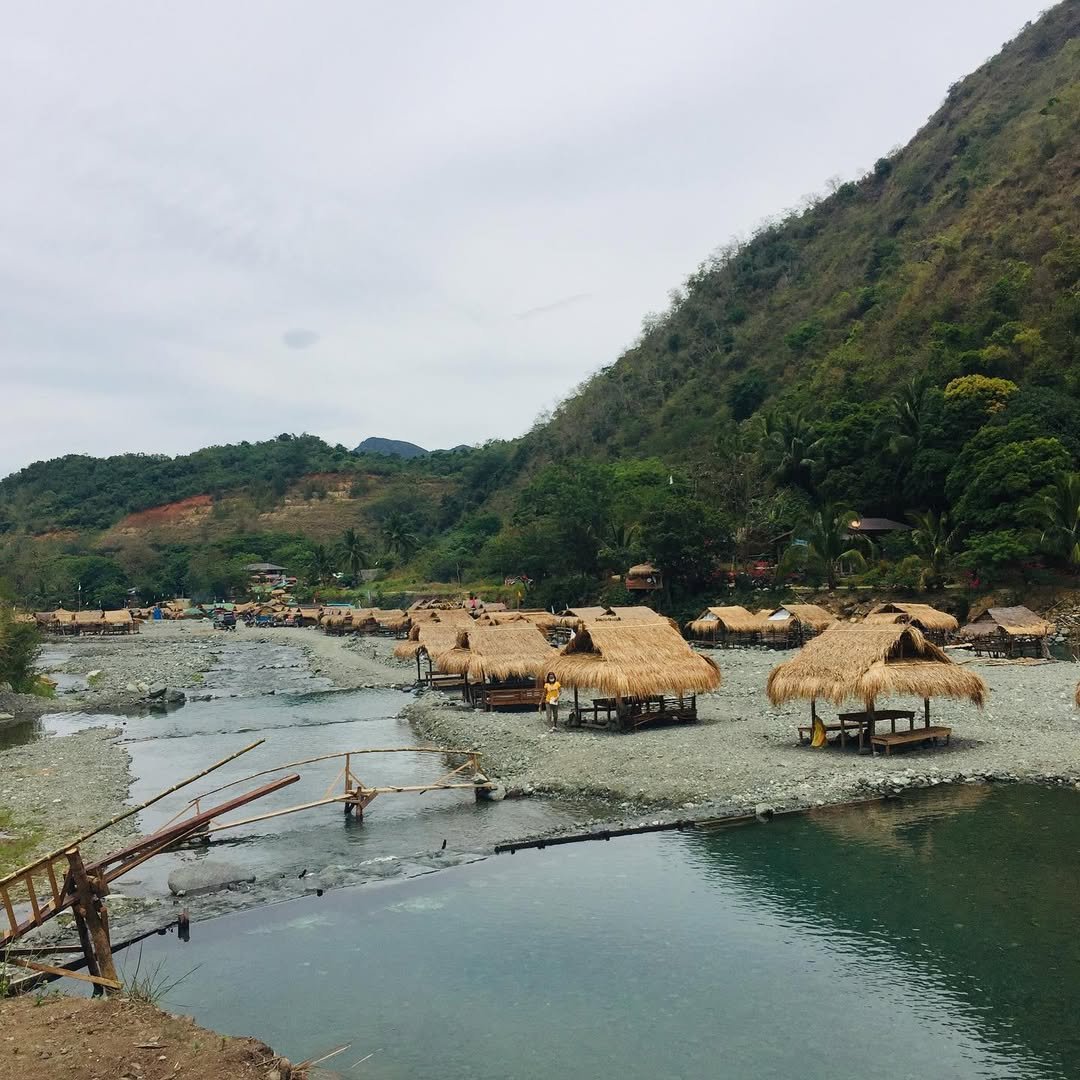
Conclusion: Why Your Next Trip Should Be to a Nueva Ecija Tourist Spot
As we’ve journeyed through this guide, it’s clear that Nueva Ecija presents a travel proposition far richer than its agricultural fame suggests. From my travels, I can confidently say it’s a province that offers a compelling blend of everything a modern traveler seeks: adrenaline-pumping adventures in its natural parks, serene relaxation in its emerging highland resorts, and profound journeys into our nation’s history and faith.
Its strategic location, just a few hours from Metro Manila, makes it an incredibly accessible and dynamic destination that is constantly evolving. I urge you to explore its multifaceted soul. Every Tourist Attraction in Nueva Ecija tells a different story, and the time to discover each unique Nueva Ecija tourist spot—from its famous icons to its fleeting hidden gems—is now.


